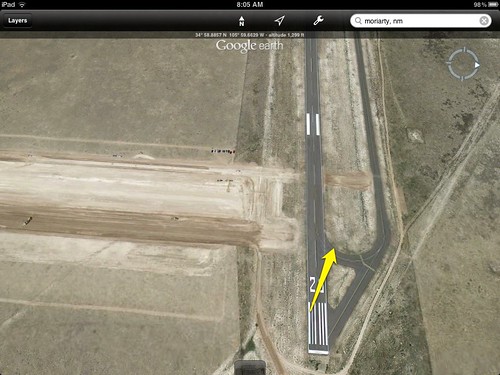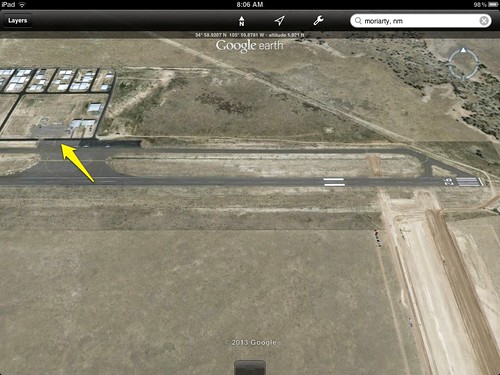FastEddieB
Touchdown! Greaser!
- Joined
- Oct 14, 2013
- Messages
- 11,421
- Location
- Lenoir City, TN/Mineral Bluff, GA
- Display Name
Display name:
Fast Eddie B
Greg,
I understood your point.
I understood your point.
http://flightclub.jalopnik.com/watch-these-seat-soiling-crosswind-operations-from-birm-1541878105
Watch how the Big Iron does crosswinds at Birmingham
You kept your speed up......above the white arc?

We all realize that they are aerodynamically identical, right?
No they don't realize it and from the sounds of it, very few have done one.
Point taken. Thank you.That wasn't my point. My point was the comment that we ALL knew that. That isn't what I am sure of because I am sure some people think there is a difference.


Include me on that.No need to convince every pilot that my way is the right way, but...
...cutting down on the crosswind component by landing at an angle has worked very well for me over the years.
Arrived at Moriarty, NM, in my Sky Arrow with quite a howling NW wind.
Landed like this:

Mentioned it to a glider pilot, who said if the wind was really strong they'd pretty much just land angled towards the ramp:

(BTW, you can see the N/S runway under construction, which should help ameliorate the problem.)
Taking off from Sedona I similarly ate away at the crosswind component by angling across the runway.
Bear in mind I'm talking small planes here, up to maybe Aztec-sized. I don't know if bigger planes and jets can get any benefit at all to make it worthwhile.
BTW, my Sky Arrow can touch down at right about the stall speed of 39k. Figure in a strong wind, and it feels like walking speed at touchdown and takes maybe a couple hundred feet or even less. So using the runway in a flexible manner is a real help.
But That's Just Me™ - everyone else can do it however they like.
No need to convince every pilot that my way is the right way, but...
...cutting down on the crosswind component by landing at an angle has worked very well for me over the years.
Arrived at Moriarty, NM, in my Sky Arrow with quite a howling NW wind.
One size does not fit all. You wouldn't want to try that in a Boeing 777.
Checkout the canadian airliner,a few years ago, lost power, pilot with lots of glider time landed it safely at a smaller airport. Approach included a slip.
Depends on the airplane.
So, why would you say ".....there was no way it was gonna' work with flaps"? At 70 mph you'd be well within the flap extension rangeI wasn't really watching airspeed as much as 'feeling' the plane. If I had to guess, I'd say I touched at about 70m.p.h. Full rudder deflection and a lot of aileron.
I flew it on more than landed. The twilight zone is when the speed drops enough for the tail to start coming down.
That's where the downwind brake and the praying comes in.
It's apparent from the posts, very few have little or no idea of how to slip an aircraft to the runway. Way too much verbiage. It's not difficult once one does it 20 or thirty times. Have at it!This crab/kick, forward/side stuff has been hashed out so many times on every pilot forum I've ever been on it's almost nauseating. But I feel compelled to toss in my two cents regardless.
As for the poll, most people are going to pick option #1 because it really doesn't make much sense to start slipping on final if your a quarter or a half mile out unless you need to lose a lot of altitude. I don't care how strong the x-wind is. For one thing, the x-wind at 700 feet a quarter mile from the airport is most likely not going to be the same as the x-wind at 4 feet over the numbers so you can toss that whole gauging theory out the window.
The second point I'd like to bring up is this myth that your airspeed indication is going to go completely haywire when you slip. Most everyone has a GPS these days so go on up there and look at the correlation between your indicated airspeed and your GPS ground speed then start stepping on the rudder and entering a slip while watching them to see how much of a deviation you get. It's going to be a lot less than you think.
I love flying as much as the next guy and I like talking about it but we as a group seem to have a compulsion to seriously over analyze this little hobby of ours. If you really want to get better at x-wind landings the answer is more flying and less talking about it. :wink2:
So, why would you say ".....there was no way it was gonna' work with flaps"? At 70 mph you'd be well within the flap extension range
Could you please post verbatim the paragraph in your skywagon POH that "....recommends no flaps.....in a x-wind"? I suspect there's a caution against slipping with full (40*) flaps, same as the book for my 170B and you're reading more into the caution than is there..........................
My POH recommends no flaps on the skywagon in a x-wind.
Could you please post verbatim the paragraph in your skywagon POH that "....recommends no flaps.....in a x-wind"? I suspect there's a caution against slipping with full (40*) flaps, same as the book for my 170B and you're reading more into the caution than is there.

If you want to go to the trouble of finding one and then posting a counter point verbatim what it says, have at it. I know what mine says.
I can say this.
In Hereford Texas, when you're landing my skywagon on runway 20, and the wind is blowing ~30 m.p.h. from ~280 degrees, I can't land my plane with flaps. I tried it, and got blown into the next county.... had to go around ... try again ... and again ... only no flaps, keep the speed up, keep the wing down, and fly it on worked for me.
I pulled up a Cessna 180K POH and also a C185F POH and looked at it, no statement about anywhere about recommending a flaps up landing for crosswinds.
Which model Skywagon do you have?

